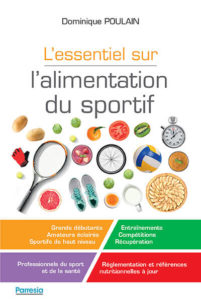Quels paramètres utiliser dans la surveillance des enfants obèses : BMI, Tour de taille, Tour de hanche ?

BMI, waist-circumference and waist-hip-ratio as diagnostic tests for fatness in adolescents
Auteur(s): M. Neovius, Y. Linne, S. Rossner
Réf.: Int J. Obesity, 2005, Vol 29, Iss 2, pp 163-169 (Selectively Covered)
Adresse: Neovius M., Karolinska Univ Hosp, Karolinska Inst, Obes Unit, SE-14186
Stockholm, SWEDEN
Mots clés: BODY-MASS INDEX; TRICEPS SKINFOLD THICKNESS; FOLLOW-UP; CHILDREN; OVERWEIGHT; OBESITY; VALIDITY; YOUTHS; PLOTS
Objective : To evaluate the diagnostic accuracy of body mass index (BMI, kg/m2), waist-circumference (WC) and waist-hip-ratio (WHR) as diagnostic tests for detecting fatness in adolescents.
Design : A cross-sectional analysis of 474 healthy adolescents aged 17 y was used. Measurements of height, weight, WC, hip-circumference and body fat percentage (%BF) were obtained. The diagnostic accuracy for detecting excess fatness was evaluated through receiver operating characteristics (ROC) analyses with %BF, measured by densitometry (air-displacement plethysmography), as reference test.
Results : BMI and WC showed strong positive correlation (r = 0.68-0.73; P<0.0001) with %BF in both sexes, but the correlation was weaker for WHR (r = 0.30-0.41; P<0.0001). For overweight and obesity in boys and obesity in girls, the area under the ROC curve was high (0.96-0.99) for BMI and WC. WHR was not significantly better than chance as diagnostic test for obesity in girls. For BMI and WC, highly sensitive and specific cutoffs for obesity could be derived, while larger trade-offs were needed for detecting overweight in girls. The cutoffs producing equal sensitivity and specificity were lower than the ones minimizing the absolute number of misclassifications. The latter approached internationally recommended reference values, but were still several units lower for BMI in girls and several centimeters lower for WC in boys.
Conclusion : BMI and WC were found to perform well as diagnostic tests for fatness, while WHR was less useful. The discrepancies between cutoffs producing equal sensitivity and specificity, cutoffs minimizing the absolute number of misclassifications and internationally recommended reference values for overweight and obesity highlight the importance of specifying the characteristics of classification systems for different settings.
Commentaires : Corrélation entre obésité et : %MG, BMI, et tour de taille. Mauvaise corrélation du rapport Tour de taille/tour de hanche. Intérêt de ces mesures dans la prise en charge des enfants obèses.
Fiche Pratique
La moitié de mon assiette en fruits et légumes (Pdf, 1 page, 265 ko).
Source : www.aprifel.com
Santé et Performance

Notre Société savante a pour mission de promouvoir la Nutrition du sport, dans un objectif de protection de la santé, de recherche de performance, et de prévention des conduites addictives.
Nous proposons des colloques et des journées de formation, fondés sur une actualisation des connaissances scientifiques...
> Santé et Performance

